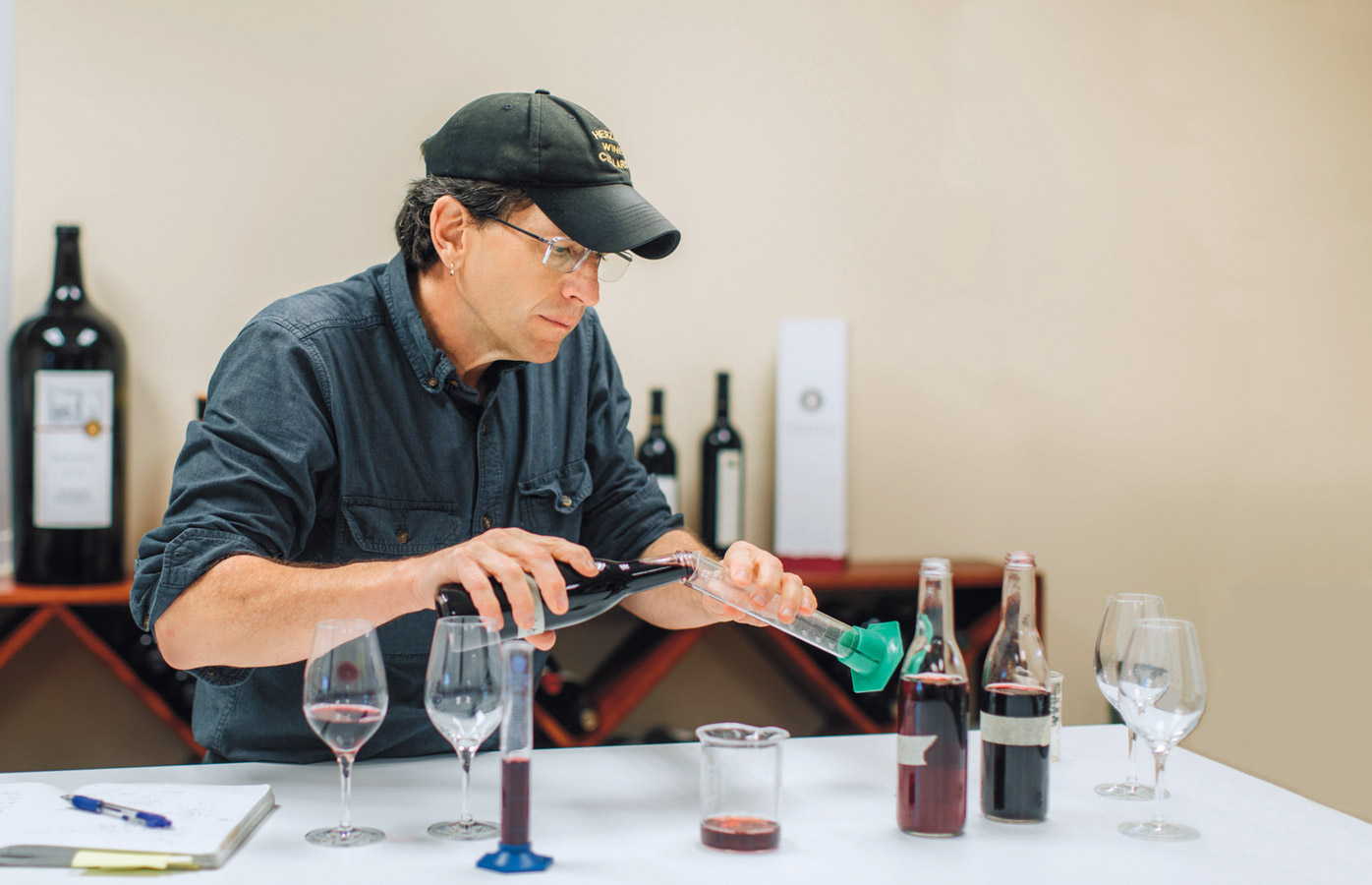Joe Hurliman: Heard it Through the Grapevine
Listening to the grapes helps winemaker reveal their essence.
Joe Hurliman listens to grapes. They can make him smile, giggle or exclaim “Wow!” And when they do all three, Hurliman knows he’s onto to something special.
Hurliman, winemaker and general manager of wine operations at Herzog Wine Cellars in Oxnard, is quick to note that assigning human traits to fruit is a dubious pursuit. But when it comes to wine, he stands by anthropomorphism.
“I want the grapes to tell me what they are about,” he says. As a winemaker, he feels that it’s his job to allow the grapes’ essence to emerge, not “put them in a straitjacket.”
A San Francisco native, Hurliman fell in love with wine in the early 1980s in the Robert Mondavi tasting room. So smitten was he by “the whole concept of wine—the technical, scientific, creative, artistic”—that he vowed to learn as much as he could by “attempting to try every single wine variety in the world.” Still a student studying health science, he tasted wine whenever he could, keeping a journal, which he still has.
“I would go to Pic ’N’ Save and buy a 99-cent bottle of wine made from Mission grapes so I could check it off,” he says.
His first winery job was an internship at Old Creek Ranch Winery in Ventura, part of his plan to study oenology at Fresno State, whose program requires students work as winery interns. But instead of going to college, he accepted a position at Leeward Winery in Ventura, eventually becoming cellar master at the now-defunct winery. A few years later, John Alban invited him to help develop a vineyard and winery in Edna Valley.
Alban, one of the Central Coast’s original Rhone Rangers, helped Hurliman discover the foundation of his winemaking approach: “Get a goal. Be focused. Pay attention to what the grapes, the juice and the wine are telling me,” he says. He spent eight years working with Alban, becoming assistant winemaker before he joined Herzog, Ventura County’s largest winery, in 1998.
He also produces Eagles Landing wines as a joint venture with the Herzog family. It’s a small-production label of less than 600 cases that allows him “to play with different styles and grape types.”
Hurliman’s philosophy of winemaking is built on balance and focus. “I want to make wines that don’t have one aspect that is skewing toward something. I don’t want an imbalance in the sense of the flavor profile, the smell or the mouthfeel,” he says. “I want my wines to be elegant.”
The focus comes in as he allows the grapes to express themselves and all their positive attributes. “I want my wine to be focused as wine, not as oak, or high alcohol or over-concentration,” he says. Too much focus on one aspect means you miss “nuances of terroir, the microclimate, the clonal selection, the fog, the wind and the sunlight exposure,” Hurliman says.
A self-described “cork dork,” Hurliman loves walking the rows of the vineyard, especially when it’s harvest day. “You stick your hand out and pick a grape off a cluster and put it in your mouth and it’s exactly what you want from the juice that you’re going to be working with in the next day or so,” he says. “That’s a ‘wow’ moment.”
As part of the Ventura County wine scene for most of the past 30-plus years, 19 of them at Herzog, Hurliman is excited to see the area developing.
“The majority of the wineries in Ventura County are less than 15 years old, and there’s a great deal of potential with this simply because wine improves with age. With vintages growing older, Ventura County’s wineries continue to offer higher-quality, higher-value varieties, and each year, the region increasingly becomes a more sought-after destination for wine lovers.
It’s a cumulative effect––older vintages bring in more wine enthusiasts, which, in turn, encourages growth for new wineries. I suspect that Ventura County’s wine scene will continue to grow and flourish in years to come.”
One of his favorite wines he makes at Herzog is the Herzog Wine Cellars Camouflage blend. It comes from an 11-acre parcel planted with 12 different varietals in the middle of Herzog’s 240-acre vineyard in Clarksburg. The winery acquired some Portuguese varieties, Viognier, Tempranillo, Primitivo and Sangiovese in early summer 2014, and Hurliman wanted to hear what those grapes had to say. “Let’s do a red field blend,” he thought. “I’ll find a place for whatever I make.”
Field blending is a timeless practice of making wine from all the grapes in a single vineyard. This kitchen-sink collection included grapes that ripen at different rates, so Hurliman let the early-ripening grapes have extended hang time and waited for the late-ripening fruit to reach its full potential. After pressing and fermentation, the wine was racked once and spent only about a month in oak barrels. “I really wanted to let the wine be itself,” he says.
After a bit of aging, Hurliman went into the cellar during a Sabbath observance and asked an assistant to pull a sample—Herzog’s wines are Certified Kosher, so only an Orthodox Jew can touch any of the equipment or the wine throughout its production.
“I had that moment where I smiled, and I giggled and I went ‘Wow,’” he says. Camouflage has been produced every year since and is, Hurliman says happily, “very successful.” In fact, the 2014 vintage sold out and 2015 has very limited availability. For the 2016 vintage released in November, the 12-grape blend will arrive with a new name: “Choreograph.”




